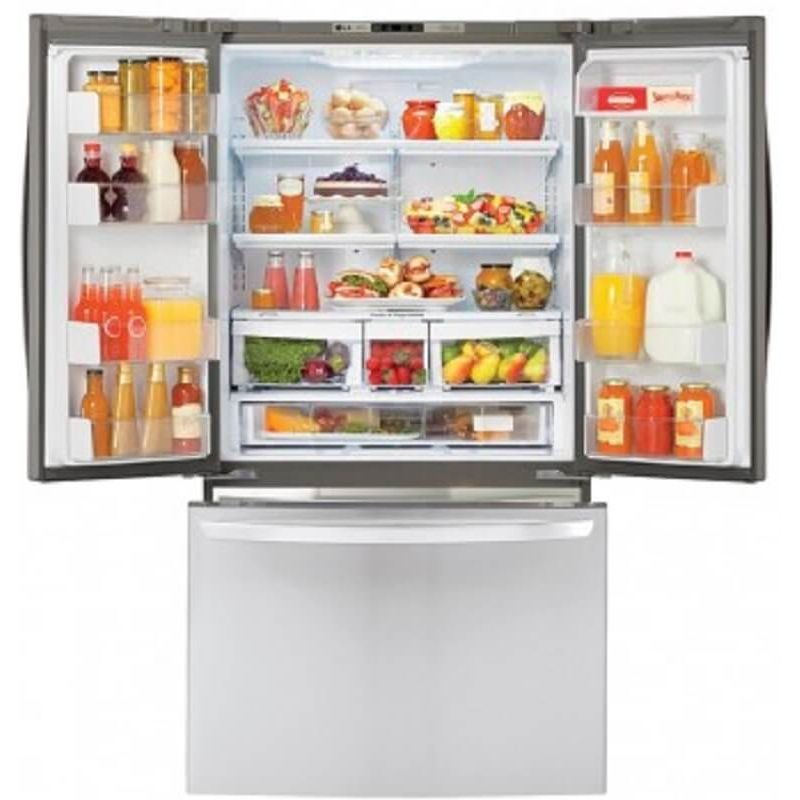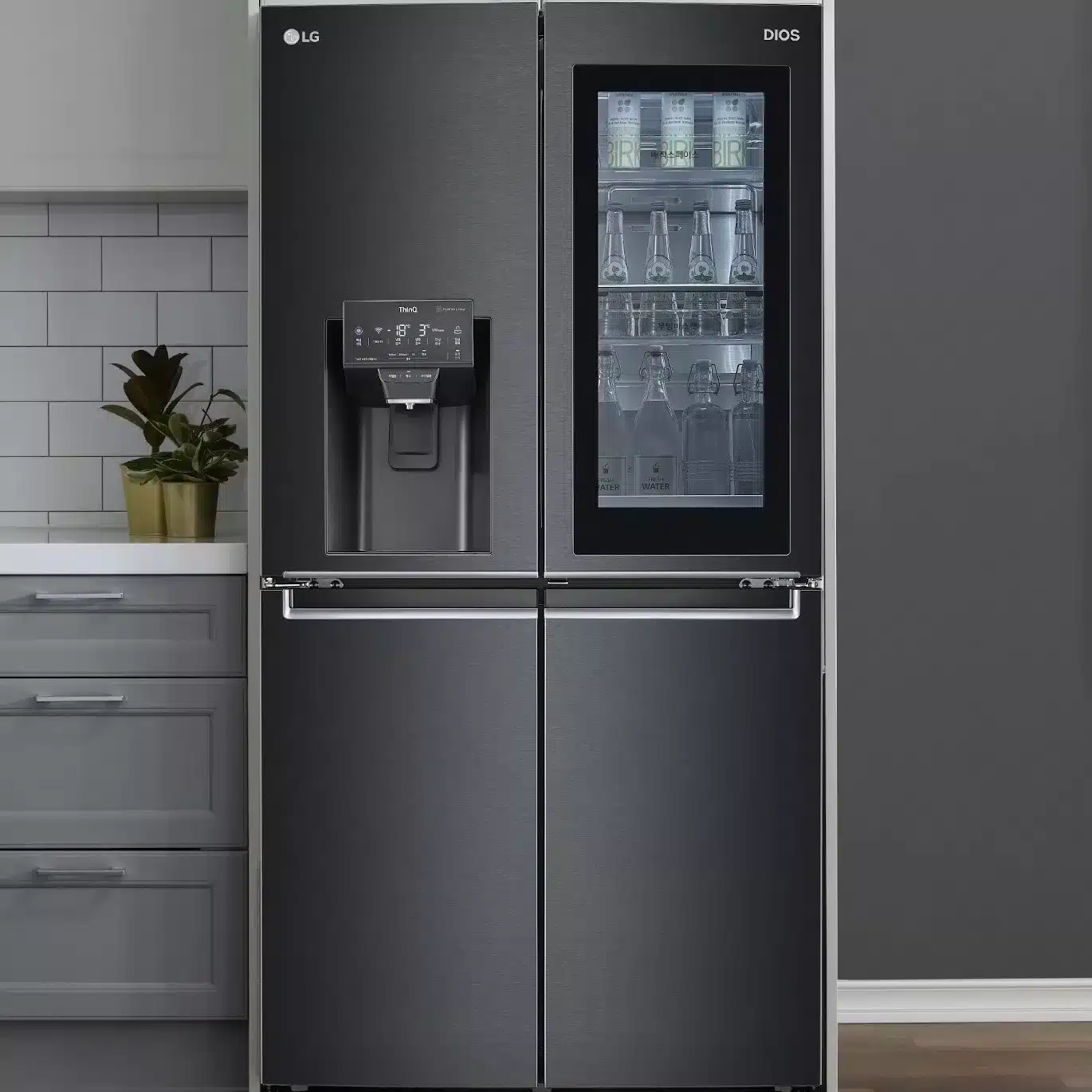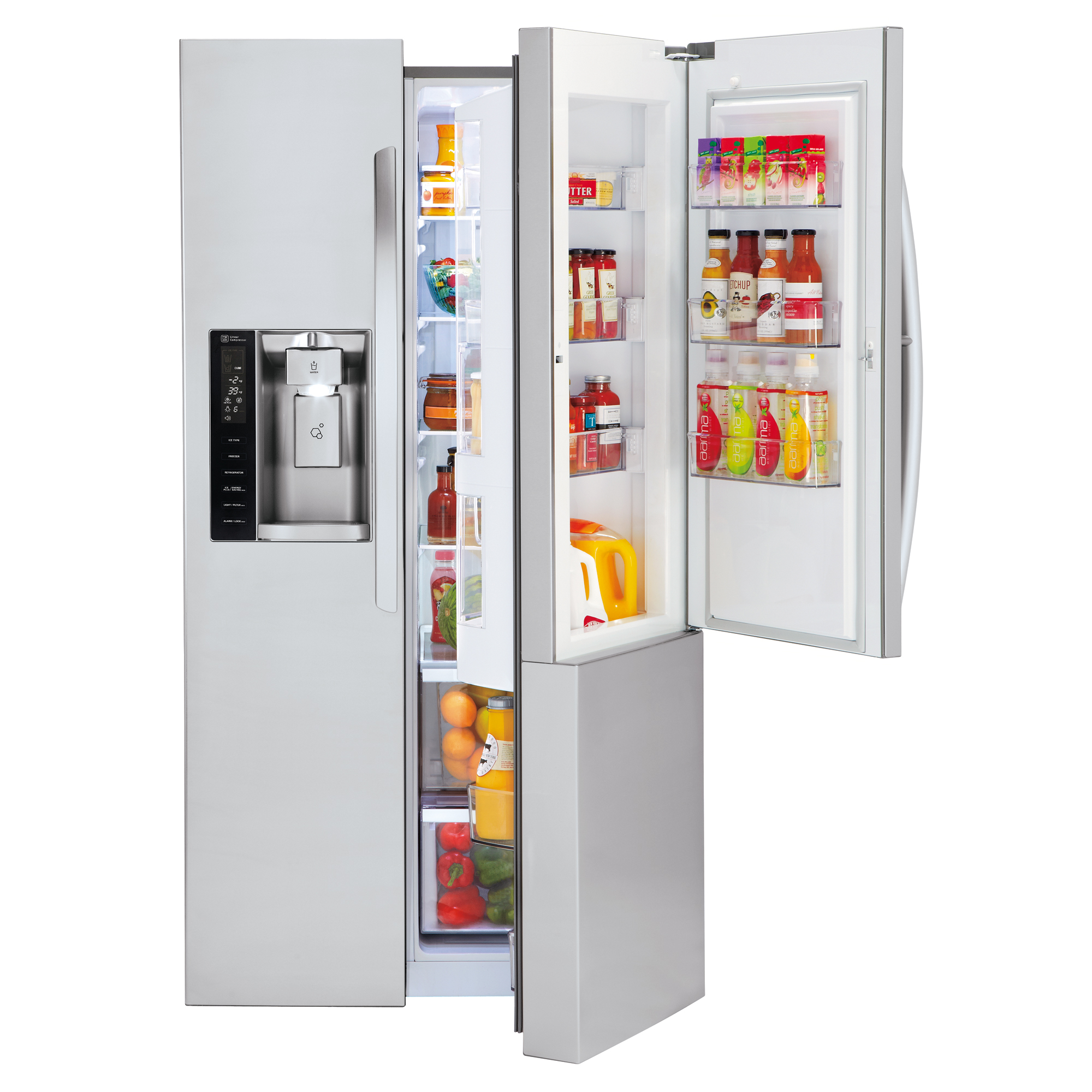If you have an LG fridge that is not cooling properly or at all, you may be wondering what is wrong and how to fix it. A fridge that is not cooling can cause food spoilage, waste of energy, and inconvenience. Fortunately, there are some common reasons why your LG fridge may not be cooling and some simple solutions that you can try.
Some possible reasons why your LG fridge is not cooling are:
- The power is out or the fridge is not plugged in
- The door is not closing tightly or the seals are damaged
- The fridge is improperly located or overloaded
- The temperature of the refrigerator is set too high or too low
- The vents, coils, or filters are clogged or dirty
- The condenser fan motor, evaporator fan motor, or compressor is faulty or broken
- The temperature control thermostat, start relay, or main control board is defective
- There is a refrigerant leak in the sealed system
In this post, we’ll explain each of these reasons in more detail and how to troubleshoot and fix them. We’ll also answer some common questions about LG fridge cooling issues, such as how to check the temperature, how to reset the fridge, and how to prevent future problems.
How To Troubleshoot and Fix LG Fridge Not Cooling Issues
To troubleshoot and fix your LG fridge not cooling issues, you need to identify the possible cause and follow the appropriate steps. Here are some tips on how to do that:
- Check the power. The first thing to check is whether your LG fridge has power. You can do this by plugging in another appliance into the same outlet and seeing if it works. If it doesn’t, then you may have a power outage or a tripped circuit breaker. You can restore the power by contacting your utility company or resetting the circuit breaker. If the outlet works, then you need to check if your LG fridge is plugged in properly and if the power cord is damaged. You can plug in your LG fridge into another outlet and see if it works. If it doesn’t, then you may need to replace the power cord.
- Check the door. The next thing to check is whether your LG fridge door is closing tightly and securely. You can do this by opening and closing the door and listening for a click sound. If you don’t hear a click sound, then you may have a problem with the door hinges, latch, or switch. You can adjust the hinges or replace the latch or switch if they are loose or broken. You also need to check if the door seals are intact and clean. You can do this by inspecting them for any cracks, tears, or dirt. You can clean them with a damp cloth and mild soap or replace them if they are damaged.
- Check the location and load. Another thing to check is whether your LG fridge is located and loaded properly. You need to make sure that your LG fridge has enough clearance around it for proper air circulation and ventilation. You can refer to your owner’s manual for the recommended clearance dimensions for your model. You also need to make sure that your LG fridge is not overloaded with food items that block the air flow inside the fridge. You can rearrange or remove some items to create more space and allow better cooling.
- Check the temperature settings. One more thing to check is whether your LG fridge temperature settings are correct and consistent. You need to make sure that your LG fridge temperature is set between 35°F and 38°F for the refrigerator compartment and between 0°F and 5°F for the freezer compartment. You can adjust the temperature settings using the control panel on your LG fridge or using the LG ThinQ app on your smartphone. You also need to make sure that your LG fridge temperature is not affected by external factors such as ambient temperature, humidity, sunlight, or drafts. You can avoid placing your LG fridge near heat sources such as ovens, stoves, radiators, or windows.
- Check the vents, coils, and filters. If none of the above steps solve your LG fridge not cooling issue, then you may have a problem with the vents, coils, or filters of your LG fridge. These components help to keep your LG fridge cool by circulating cold air inside the fridge and removing heat from outside the fridge. If they are clogged or dirty, they won’t work properly and cause poor cooling performance. You need to check if there are any obstructions or dust on the vents inside your LG fridge and clean them with a soft brush or vacuum cleaner. You also need to check if there are any dirt or debris on the condenser coils behind or under your LG fridge and clean them with a coil brush or vacuum cleaner. You also need to check if there are any contaminants on the water filter inside your LG fridge and replace it if it is expired or damaged.
- Check the fan motors and compressor. If cleaning the vents, coils, and filters doesn’t fix your LG fridge not cooling issue, then you may have a problem with the fan motors or compressor of your LG fridge. These components help to keep your LG fridge cool by circulating refrigerant through the sealed system and creating cold air. If they are faulty or broken, they won’t work properly and cause no cooling or insufficient cooling. You need to check if the condenser fan motor and evaporator fan motor are running and spinning smoothly. You can do this by listening for any unusual noises or vibrations from the back or bottom of your LG fridge. You also need to check if the compressor is running and humming normally. You can do this by touching the compressor and feeling for any heat or vibration. If you find any problems with the fan motors or compressor, you may need to replace them or contact a professional technician for repair.
- Check the thermostat, relay, and board. If replacing the fan motors or compressor doesn’t fix your LG fridge not cooling issue, then you may have a problem with the thermostat, relay, or board of your LG fridge. These components help to keep your LG fridge cool by regulating the temperature and power of the fridge. If they are defective, they won’t work properly and cause erratic cooling or no cooling at all. You need to check if the temperature control thermostat is sensing and maintaining the correct temperature inside your LG fridge. You can do this by using a multimeter to test its continuity and resistance. You also need to check if the start relay is providing power to the compressor and starting it up. You can do this by using a multimeter to test its resistance and voltage. You also need to check if the main control board is communicating and controlling the other components of your LG fridge. You can do this by using a multimeter to test its voltage and signals. If you find any problems with the thermostat, relay, or board, you may need to replace them or contact a professional technician for repair.
- Check for refrigerant leak. If none of the above steps fix your LG fridge not cooling issue, then you may have a problem with a refrigerant leak in your LG fridge’s sealed system. The refrigerant is a chemical that helps to keep your LG fridge cool by absorbing heat from inside the fridge and releasing it outside the fridge. If there is a leak in the sealed system, the refrigerant will escape and cause low pressure and poor cooling performance. You need to check for any signs of a refrigerant leak in your LG fridge’s sealed system, such as frost buildup, oil stains, hissing sounds, or warm air coming from the vents. If you find any signs of a refrigerant leak, you may need to contact a professional technician for repair.

How To Check The Temperature Of Your LG Fridge
To check the temperature of your LG fridge, you can use a thermometer or the LG ThinQ app on your smartphone.
- Using a thermometer. To use a thermometer to check the temperature of your LG fridge, you need to place it in a glass of water in the refrigerator compartment or between frozen food items in the freezer compartment. You need to leave it there for at least 24 hours without opening the door. Then, you can read the temperature on the thermometer and compare it with the recommended temperature settings for your LG fridge.
- Using the LG ThinQ app. To use the LG ThinQ app to check the temperature of your LG fridge, you need to connect your LG fridge to WiFi and download the app on your smartphone. Then, you need to open the app and select your LG fridge from the list of devices. You will then see the current temperature settings and status of your LG fridge on the app screen.
How To Reset Your LG Fridge
To reset your LG fridge, you can unplug it from the power outlet or use the reset button on the control panel.
- Unplugging from power outlet. To unplug your LG fridge from the power outlet, you need to pull out the plug from the wall socket and wait for at least 10 minutes before plugging it back in. This will reset your LG fridge’s electronic components and clear any error codes or glitches.
- Using reset button on control panel. To use the reset button on your LG fridge’s control panel, you need to press and hold it for 3 seconds until you hear a beep sound. This will reset your LG fridge’s settings and functions.
How To Prevent Future Cooling Issues With Your LG Fridge
To prevent future cooling issues with your LG fridge, you can follow some simple maintenance tips, such as:
- Clean your vents, coils, and filters regularly. You should clean your vents, coils, and filters at least once every six months or more often if they are dirty or clogged. This will help to improve air circulation and heat dissipation in your LG fridge and prevent overheating or poor cooling performance.
- Check your door seals and hinges periodically. You should check your door seals and hinges every few months or whenever you notice any gaps, cracks, or tears. This will help to prevent cold air from escaping or warm air from entering your LG fridge and affecting the temperature and humidity levels.
- Adjust your temperature settings and load properly. You should adjust your temperature settings according to the recommended range for your LG fridge and the ambient conditions. You should also avoid overloading your LG fridge with too many food items or placing them too close to the vents or walls. This will help to maintain a consistent and optimal temperature and prevent spoilage or freezing of your food items.
- Avoid placing your LG fridge near heat sources or windows. You should avoid placing your LG fridge near heat sources such as ovens, stoves, radiators, or windows. This will help to prevent external heat from affecting your LG fridge’s cooling performance and efficiency.
Conclusion
If your LG fridge is not cooling properly or at all, you don’t have to panic or call a technician right away. There are some common reasons why this may happen and some simple solutions that you can try yourself.
To troubleshoot and fix your LG fridge not cooling issues, you just need to follow these steps:
- Check the power
- Check the door
- Check the location and load
- Check the temperature settings
- Check the vents, coils, and filters
- Check the fan motors and compressor
- Check the thermostat, relay, and board
- Check for refrigerant leak
You should also use only LG fridges that are compatible with your model and power supply. You should also check how often you need to clean, repair, or replace your LG fridge components based on your usage and warranty.
We hope this post has helped you learn why your LG fridge is not cooling and how to fix it. If you have any questions or comments, please feel free to share them below.




